“Aging in place” – the ability to live safely and independently in one’s own home for as long as possible – is a goal for a growing number of adults. Of all the rooms in a house, the bathroom presents one of the greatest challenges to this goal due to its combination of hard surfaces, water, and tight spaces. A traditional bathroom can quickly become a significant hazard as mobility, balance, and vision change with age.
However, with thoughtful design, a bathroom can be transformed into a safe, comfortable, and empowering space that supports long-term independence. An aging-in-place bathroom isn’t about creating a sterile, institutional environment; it’s about seamlessly integrating smart, universal design features into a beautiful, modern aesthetic. This guide explores the essential design ideas for creating a bathroom that is ready for the future.
The Foundation of Aging-in-Place Design: Preventing Falls
Falls are the leading cause of injury among older adults, and the bathroom is where many of these accidents happen. The primary goal of an aging-in-place design is to minimize this risk.
- Non-Slip Flooring: This is the most crucial starting point. Choose flooring with a high slip-resistance rating. Matte-finish or textured porcelain tiles are excellent choices. Avoid highly polished, glossy tiles which become extremely slippery when wet. Luxury vinyl tile (LVT) also offers good grip and is softer underfoot.
- Curbless (Zero-Threshold) Shower: Eliminating the need to step over a curb to enter the shower is one of the most significant safety upgrades you can make. A curbless, walk-in or roll-in shower provides seamless, trip-free access. This requires proper floor sloping and drainage, often using a modern linear drain.
- Ample Clear Floor Space: Ensure wide pathways and sufficient turning space (a 60-inch or 152 cm diameter circle is ideal) to comfortably accommodate a walker or wheelchair if needed in the future.
Key Features for an Accessible and Safe Bathroom
1. Strategic Grab Bars
- Why: Provide essential support for stability when sitting, standing, and moving around.
- The Modern Approach: Forget clinical-looking bars. Today, grab bars are available in a huge range of stylish finishes, like matte black, brushed brass, and brushed nickel, that can match your faucets and other hardware. Some designs are cleverly integrated to also function as towel bars, shelves, or toilet paper holders.
- Essential Placement:
- Inside the Shower: Install both horizontally and vertically.
- Beside the Toilet: For support when sitting and standing.
- Near the Bathtub (if applicable).
- Crucial Tip: Grab bars must be securely mounted into wall studs or proper blocking installed behind the wall before tiling. Never rely on suction-cup bars for primary support.
2. The Shower and Bathtub Area
- Handheld Showerhead on a Slide Bar: This is a vital feature. It allows the showerhead to be used at any height, whether standing or seated, and makes rinsing easy without complex movements.
- Shower Seat or Bench: A built-in, tiled bench or a sturdy, wall-mounted fold-down seat provides a secure and comfortable place to sit while showering, reducing fatigue and fall risk. Teak wood is a popular, spa-like, and water-resistant material for benches.
- Walk-In Tubs: For those who prefer bathing, a walk-in tub with a hinged, water-tight door eliminates the high step of a traditional tub. They often come with built-in seats and grab bars.
3. The Toilet Area
- Comfort-Height Toilet: These toilets are slightly taller than standard models (typically 17-19 inches / 43-48 cm high), making it easier for adults with knee or joint pain to sit down and stand up.
- Accessible Flush Controls: Choose toilets with easy-to-use lever handles or large push-buttons instead of small, hard-to-press buttons.
4. The Vanity and Sink
- Accessible Height & Knee Clearance: Consider a wall-mounted “floating” vanity or a design with open space underneath. This provides crucial knee clearance for seated users. Mounting the vanity at a comfortable height (around 32-34 inches / 81-86 cm) is often more ergonomic.
- Easy-to-Use Faucets: Single-lever faucets are much easier to operate than dual knobs that require twisting. Touchless, sensor-activated faucets offer the ultimate in ease of use for those with limited hand strength or arthritis.
5. Smart Lighting Solutions
Good lighting is critical for safety as vision changes with age.
- Layered Lighting: Combine bright, even ambient light (from recessed lights or ceiling fixtures), excellent, shadow-free task lighting at the vanity (vertical sconces are ideal), and wet-rated lighting in the shower.
- Reduce Glare: Use frosted bulbs or fixtures that diffuse light to prevent harsh glare, which can be difficult for aging eyes.
- Night Lighting: This is essential for preventing nighttime falls. Install low-level, motion-activated lights, such as LED strips under the vanity (toe-kick lighting) or a simple plug-in night light, to safely illuminate the path to and within the bathroom.
- Rocker Switches: Install large, easy-to-press rocker or paddle light switches at an accessible height.
6. Accessible Storage
- Prioritize Drawers and Pull-Outs: Replace standard base cabinets with deep drawers or install pull-out shelving. This brings contents to you, eliminating the need to bend down and reach into dark back corners.
- Open Shelving: Keep frequently used items like towels or daily toiletries on easily accessible open shelves.
Style Does Not Need to Be Sacrificed
An aging-in-place bathroom can be incredibly stylish. The principles of universal design—clean lines, uncluttered spaces, and high functionality—align perfectly with modern aesthetics. Stylish grab bars, elegant curbless showers with beautiful tile, sleek floating vanities, and designer lever faucets all prove that safety and high design can and should go hand-in-hand.
Conclusion
Aging-in-place bathroom design is a proactive and compassionate approach to home renovation. It’s about creating a future-proofed environment that prioritizes safety, comfort, and long-term independence without sacrificing contemporary style. By incorporating thoughtful features like a zero-threshold shower, strategically placed grab bars, a comfort-height toilet, and smart, layered lighting, you are investing in a space that will continue to serve you or your family members beautifully and safely for many years to come.

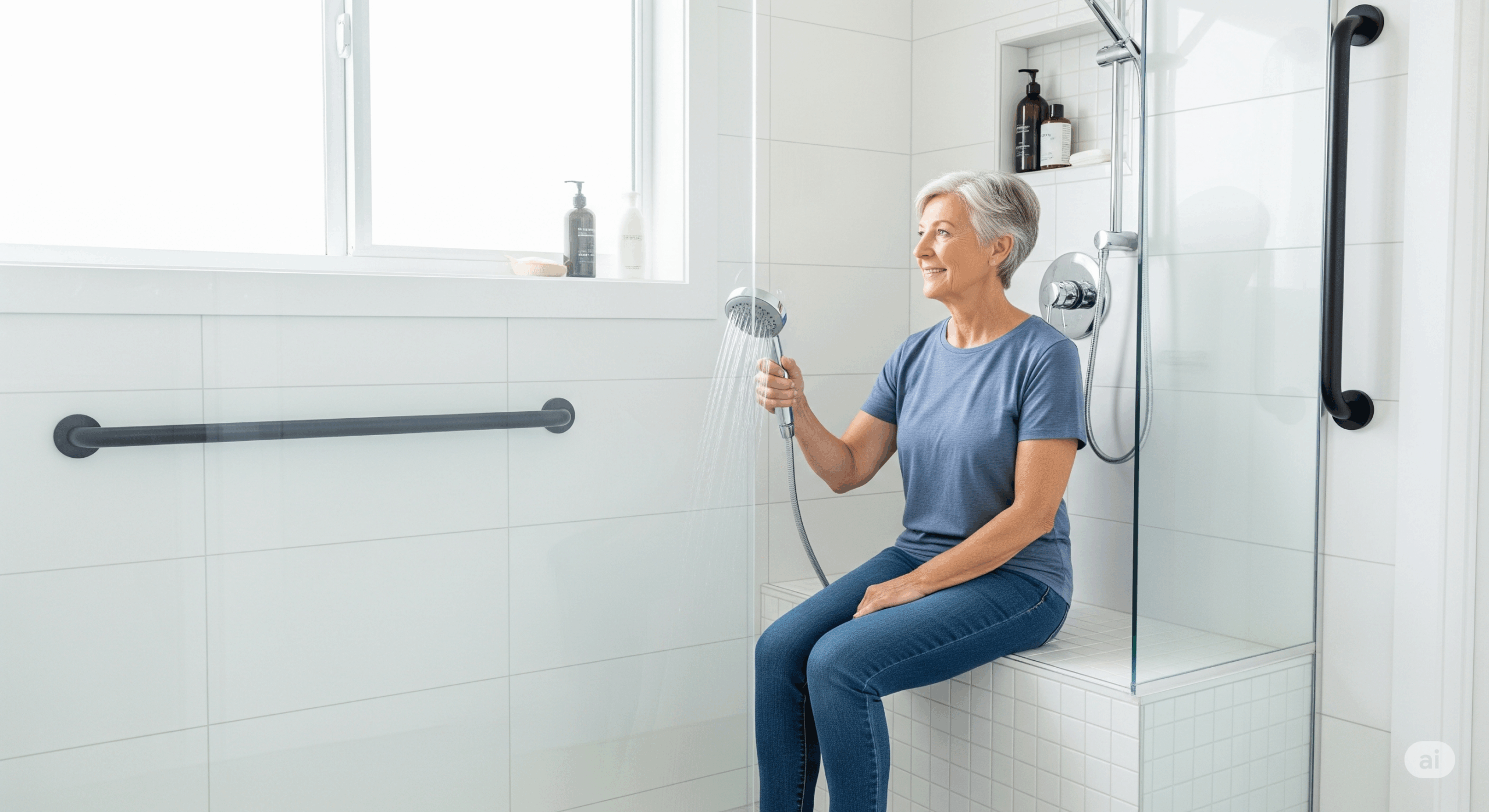
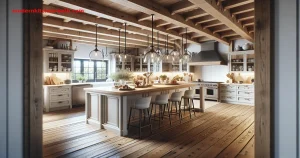
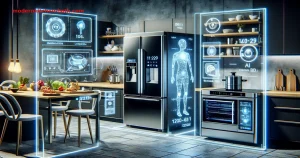
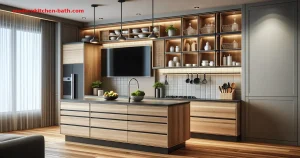
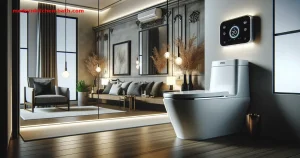

Leave a Comment